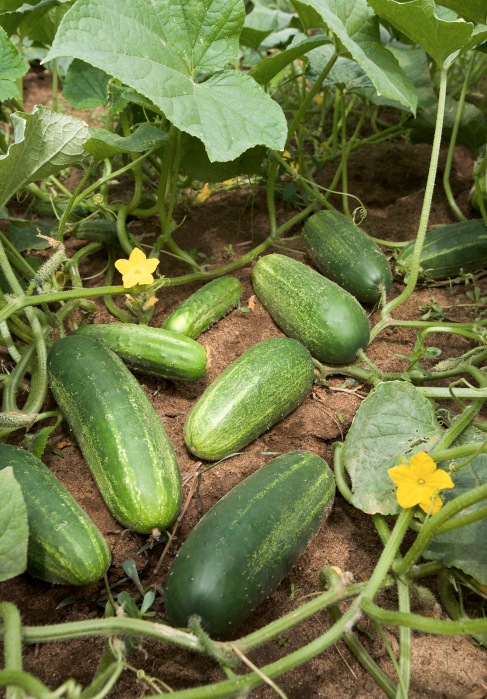Growing cucumbers
Although cucumbers have a climbing habit, most varieties are better grown along the ground, particularly in areas with warm to hot summers like subtropical Queensland.
When on the ground, the fruit is less water stressed and more likely to remain tender, crisp and juicy. Cucumbers need a sunny position and a well-drained soil that has been generously enriched with well rotted manure or compost as well as some type of potash, such as wood ash.
Many varieties tend to spread, but there are compact, almost bush-like varieties that have now been bred for people who have limited space.
How (many) to grow:
Cucumber vines yield about 10 fruits each. For most families, six plants are enough for fresh use. Harvesting time for all but pickling cucumbers is 10 to 12 weeks after sowing, and for most varieties harvesting continues over a number of weeks. Pickling cucumbers are highly productive and harvesting usually begins in six weeks.
A couple of basic cucumber varieties:
Burpless Tasty Green – Famous for its digestibility and its skin’s lack of bitterness.
Spacemaster – Perfect for when space is limited; can be grown in tubs and large containers; resistant to cucumber mosaic virus; prolific, slender green fruit with excellent taste.
Armenian – A superb and popular burpless cucumber; fruits are pale green, quite long and ribbed.
Lebanese – Many people who do not like cucumber find that they enjoy this variety; small, slender, thin-skinned, burpless green fruits with crisp, mild flesh and a small seed cavity.
Lemon Cucumber – A heavy producer of round, lemon coloured fruits with crisp, non-bitter flesh.
… plus many more.
Growing tips:
Cucumbers can be planted in raised beds or in low mounds of soil (called ‘hills’), which improve drainage. Once the soil has warmed up to at least 21°C and after the last frost date, sow seeds, 2.5 cm deep in the raised soil. Sow four to five seeds in each site. Seeds usually germinate in six to nine days.
For compact cucumber varieties, allow a spacing of 45 cm between plant clumps and 70 cm between rows.
For the larger growing varieties, allow 60 cm between plant clumps and 80 cm between rows.
Maintaining your plant:
When a plant forms its sixth or seventh leaf, pinch out the growing tip to encourage sideshoots. This helps to create compact plants that have more side branches, which will, in turn, bear more fruit.
Cucumbers bear separate male and female flowers on the same vine. The first flowers to emerge are usually male. Female flowers have a miniature cucumber (the ovary) right behind the flower, which is pollinated by bees.
Regular watering is essential during the growing season. A thick hay mulch applied after the soil has fully warmed will help to retain soil moisture and reduce water requirements throughout the growing season.
A supplementary application of pelleted organic manure or liquid seaweed fertiliser at the recommended strength can be applied when young fruits begin to swell.
Pests and diseases:
Powdery mildew, verticillium wilt and cucumber mosaic virus are the most likely problems. Slugs may cause damage to young plants.
Harvesting:
Cucumbers are at their best if they are picked when crisp and sweet, but before they reach their maximum size. Pick continuously to ensure a higher yield over a longer period of time. Don’t pull the fruit off the vine as this can cause damage; cucumbers are best harvested with a sharp knife. Harvesting usually continues until the first frost
